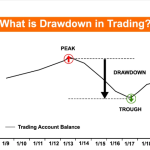
By ATGL
Updated August 28, 2025
Capital growth management is the disciplined process of expanding principal over time while keeping risk aligned to your objectives. You set a clear mandate, choose an allocation that supports appreciation, and apply repeatable rules for selection, sizing, and exits. This guide defines capital growth management in the context of active investing, distinguishes it from preservation and income objectives, and provides a practical framework you can implement and monitor. You will also see how portfolio mix, compounding, and taxes affect outcomes, and how tactical allocation can keep your capital aligned with market leadership.
Why Capital Growth Management Matters for Traders and Investors
Capital growth management directs your decisions toward increasing portfolio value through price appreciation and reinvestment. It gives you a structure for choosing exposure, managing volatility, and measuring progress so that your results depend less on intuition and more on defined rules.
What is the capital growth strategy?
It is a rules-based approach that prioritizes assets with higher expected return—primarily equities and equity-like alternatives—supported by an allocation and risk framework. You accept controlled volatility in exchange for higher growth potential, and you refresh exposures as leadership changes. For baseline definitions, see primers on capital growth, the capital growth strategy, and broader growth investing.
Capital Growth vs. Capital Preservation
- Objective: Growth seeks to increase principal; preservation prioritizes avoiding loss and protecting purchasing power.
- Asset mix: Growth favors equities and leadership sectors; preservation leans on short-duration fixed income, cash, and low-volatility instruments.
- Risk policy: Growth tolerates measured drawdowns to capture risk premia; preservation sets tighter loss limits and higher cash buffers.
- Use case: Growth is suitable for multi-year horizons; preservation aligns with near-term liabilities or low risk tolerance.
Capital Growth vs. Income Generation
- Objective: Growth focuses on appreciation and reinvestment; income seeks stable cash flow (dividends, coupons, distributions).
- Allocation: Income blends dividend equities, bonds, and income ETFs; growth concentrates on quality growth equities and sector leaders.
- Trade-off: Income can reduce volatility but may cap upside; growth targets higher total return with stricter risk controls.
For a broader overview of portfolio approaches, review our guide to investment strategies and foundational investing concepts.
Core Principles of a Capital Growth Strategy
A durable plan aligns three inputs you can control: time horizon, risk tolerance, and investment style.
- Time horizon: The longer the horizon, the greater the capacity to ride through drawdowns and hold winners. Multi-year investors can maintain larger core equity exposure; shorter-term traders rotate more frequently and set tighter exits.
- Risk tolerance and capacity: Translate comfort with volatility into explicit guardrails: maximum portfolio drawdown, per-position risk, and exposure limits by sector or theme.
- Investment style: Whether discretionary or systematic, the edge comes from consistent rules—universe definition, entry/exit criteria, and review cadence.
Example of capital growth: Accumulating a diversified set of quality growth equities or a broad equity index fund and reinvesting dividends over five to ten years; the portfolio value increases primarily through price appreciation and the effects of compounding.
Tactical Allocation and Growth-Stock Rotation
Leadership rotates across sectors and factors as cycles evolve. A growth mandate benefits from tactical allocation—tilting toward sectors exhibiting sustained relative strength and trimming laggards. Practical elements include:
- Leadership identification: Monitor sector and industry relative strength versus a broad benchmark.
- Triggers: Add on breakouts above well-defined resistance or improving earnings-revision trends; reduce on trend violations or persistent relative weakness.
- Cadence: Review weekly or biweekly to keep exposure concentrated in leaders without overtrading.
Leveraging Technical Indicators for Capital Expansion
Technical tools help standardize timing and risk. Use a concise, consistent set that supports your rules:
- Trend filters: 50-/200-day moving averages and price structure to stay aligned with prevailing trends.
- Momentum/relative strength: 6–12-month ranking to prioritize leaders.
- Breadth: Percent of constituents above moving averages to assess participation.
- Volatility: ATR-based risk budgeting to normalize position sizes across names.
For a catalog of commonly used tools, see our overview of technical indicators for trading.
Structuring a Capital Growth Portfolio: Professional Tips
Map your profile to an allocation
Design your mix so the equity core captures market return while tactical components seek excess return.
Illustrative allocations
- Aggressive growth: 80–95% equities (global, small/mid-cap, thematic growth), 0–10% alternatives with equity-like upside, 5–15% cash/short bonds for flexibility.
- Balanced growth: 60–75% equities (quality growth + broad index), 10–20% fixed income (intermediate duration), 5–15% alternatives, 5–15% cash.
- Conservative growth: 40–55% equities (quality/defensive tilt), 30–40% fixed income, 5–10% alternatives, 10–20% cash.
Blend core holdings (broad index, quality factor) with tactical satellites (leadership sectors) so the portfolio participates in long-term market returns while rotating toward current strength.
Diversification with intent
Hold enough names to dilute idiosyncratic risk, but keep concentration in high-conviction ideas. Many growth portfolios operate effectively with 15–30 positions sized by volatility and governed by defined exits.
Quality within growth
Favor companies with durable revenue growth, healthy margins, and prudent leverage. This tilts the portfolio toward resilient compounding while preserving upside.
Compounding and long-term growth
Compounding is straightforward: returns build on prior gains. Two levers drive results:
- Reinvestment discipline: Reinvest dividends and realized gains into high-quality opportunities that meet your rules.
- Loss control: Avoiding large drawdowns preserves compounding; recovering from a major loss consumes time and return potential.
Illustration (pre-tax): $100,000 at 8% for 10 years grows to ~$215,892; a modest improvement in annualized return compounds meaningfully over long horizons.
Tax Considerations for Growth-Focused Investors
(General guidance; consult a tax professional for personal advice.)
- Capital gains timing: Long-term gains (held >12 months) often face lower rates than short-term gains. Where consistent with risk controls, manage holding periods accordingly.
- Account selection: Place higher-turnover strategies and income-heavy assets in tax-advantaged accounts when possible; keep tax-efficient equity exposure in taxable accounts.
- Loss harvesting: Realize losses to offset gains without violating wash-sale rules; maintain exposure via similar (not substantially identical) instruments.
- Distributions: Note mutual fund/ETF capital gains distributions late in the year and their tax impact.
- State taxes: Incorporate state rates into expected after-tax returns.
These considerations affect net growth and should be addressed in your policy statement alongside allocation and risk rules.
Implementing a Modern Capital Growth Management Plan
Translate objectives into an operating process. The steps below consolidate execution details—including position sizing and ATR-based risk management—so you have one place to reference them.
1) Define mandate and constraints
- Objective: e.g., “Grow capital at a mid-teens annualized rate while capping max drawdown at 15%.”
- Universe: Broad index constituents, liquid sector/ factor ETFs, or a curated list of quality growth names.
- Limits: Maximum single-position risk, sector caps, and a minimum cash buffer for flexibility.
2) Selection and rotation rules
- Screening: Earnings growth, margin trends, price leadership (relative strength).
- Entry criteria: Breakouts from well-defined bases or pullbacks to rising moving averages with confirmation.
- Rotation cadence: Weekly/biweekly review to promote leaders and demote laggards; avoid ad-hoc changes.
3) Position sizing and risk controls (consolidated)
- Risk budget: Define per-position risk (e.g., 0.5–1.0% of equity).
- Sizing by volatility: Convert the risk budget into shares using ATR-based stop distance or structured technical levels (prior swing, moving average). This normalizes risk across names with different volatilities.
- Stop placement: Use technical levels or a multiple of ATR; trail stops as trends advance to lock in gains and reduce open risk.
- Portfolio guardrails: Cap aggregate exposure when trend or breadth signals deteriorate; raise cash until conditions improve.
- Rebalancing: Rebalance on a set schedule (e.g., quarterly) or when weights drift beyond thresholds to manage concentration.
4) Measurement and feedback
- Performance diagnostics: Track CAGR, rolling 12-month returns, and max drawdown to verify alignment with your mandate.
- Expectancy: Monitor win rate and average gain/loss; a robust payoff ratio can offset a lower hit rate in trend-following.
- Attribution: Review contributions by sector, factor, and signal type; reinforce what works and de-emphasize what does not.
- After-tax results: Evaluate results on a net basis, not just pre-tax performance.
5) Operational practices
- Execution quality: Favor liquid instruments; use limit orders where appropriate to manage slippage.
- Automation and documentation: Use alerts, watchlists, and checklists. Maintain an investment policy statement and trade journal for consistency and review.
Final Considerations and Next Steps
Capital Growth Management is most effective when it is systematic: a clear objective, an allocation that reflects your horizon and tolerance, and a process that defines what you buy, how much you buy, and when you adjust. Concentrate exposure in leadership areas, control risk with position sizing and stops, and review results on a schedule. The combination of a durable core and targeted tactical tilts can help you compound capital without drifting outside your risk limits.
If you want a structured way to put this plan into practice—screening lists, rotation concepts, and risk frameworks tailored to active traders and long-term investors—consider Above the Green Line memberships.
<h4>Related Articles</h4>






